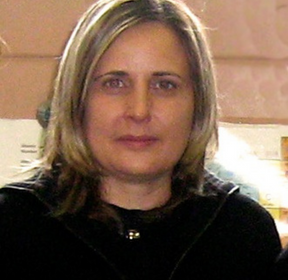Keynote Forum
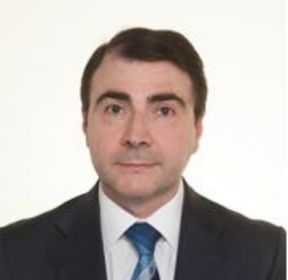
Sergio Marcucci
A T Still University, LuxembourgTitle: Posterior Sacroiliac Joints Ligament and Potential Outcomes For the Clinician
Abstract:
The sacroiliac joint (SIJ) is structured by articular surfaces between the sacral and the iliac bones. The SIJ embraces different functions because it connects the spine with the pelvis, which permits the soaking up of vertical forces from the spine and, thus, transferring vertical forces to the pelvis and lower extremities. The first goal of the SIJ is to preserve stability that is partly done by the muscles surrounding the SIJ and realized by various procedures, encompassing a large complex of ligaments connected to the SIJ. The range of motion of the SIJ is evaluated to be around 2 to 4 degrees. 35 muscles attached to the sacrum bone or innominate work together in synergy with the fascia and ligaments to move and ensure the stability of the trunk and lower extremities.
Biography:
Dr. Sergio Marcucci has completed his DHS with concentration in Global Health at the A. T. Still University, College of Graduate Health Studies, Mesa, USA. He received his MSc from A. T. Still University of Kirksville USA, and his D.O. from Sutherland College of Osteopathic Medicine, Belgium. He is practicing osteopathic medicine for 19 years. He had 20 oral presentations and one poster presentation. He has published 11 papers in reputed journals and has been serving as a reviewer board member of three repute journals.
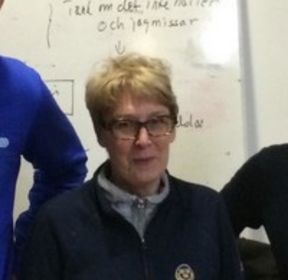
Elizabeth EKMAN
SwedenTitle: Athletes have more parallel ADHD symptoms than non-athletes?
Abstract:
Attention deficit hyperactivity disorder (ADHD) is considered a disorder. Studies have shown how environmental factors and physical activity can influence ADHD in a positive direction and prevent its negative effects. Most ADHD studies in the sport context has focused on the problems the individual has developed such as increased risk of injury, higher levels of aggression and less focus has been on how it (ADHD) can be to an advantage for the individual. Core symptoms are inattention and hyperactivity, and selective attention is considered a deficit in ADHD. The extreme form of attention or “hyper focusing” is however, not discussed in current conceptions of ADHD symptoms, but has been suggested to be added as a separate dimension of adult ADHD.
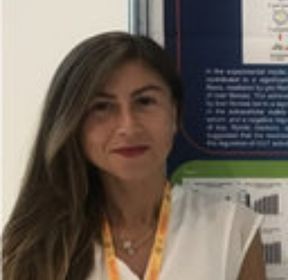
Mariarita Brancaccio
University of Naples FedericoTitle: Multidisciplinary Approach To Reveal Young Athlete Syncope
Abstract:
Laboratory medicine, along with genetic investigations in sports medicine, is taking on an increasingly important role in monitoring athletes’ health conditions. Acute or intense exercise can result in metabolic imbalances, muscle injuries or reveal cardiovascular disorders. This study aimed to monitor the health status of a basketball player with an integrated approach, including biochemical and genetic investigations and advanced imaging techniques, to shed light on the causes of recurrent syncope he experienced during exercise. Biochemical analyses showed that the athlete had abnormal iron, ferritin and bilirubin levels. Coronary Computed Tomographic Angiography highlighted the presence of an intra-myocardial bridge, suggesting this may be the cause of the observed syncopes. The athlete was excluded from competitive activity. In order to understand if this cardiac malformation could be caused by an inherited genetic condition, both array-CGH and whole exome sequencing were performed. Array-CGH showed two intronic deletions involving MACROD2 and COMMD10 genes, which could be related to a congenital heart defect; whole exome sequencing highlighted the genotype compatible with Gilbert syndrome. However, no clear pathogenic mutations related to the patient’s cardiological phenotype were detected, even after applying machine learning methods. This case report highlights the importance and the need to provide exhaustive personalized diagnostic work up for the athletes in order to cover the cause of their malaise and for safeguarding their health. This multidisciplinary approach can be useful to create ad personam training and treatments, thus avoiding the appearance of diseases and injuries which, if underestimated, can become irreversible disorders and sometimes
can result in the death of the athlete.
Biography:
Dr. Brancaccio Mariarita. During her bachelor's degree in Health Biotechnology, she took part in study on the enhancement of new pulsed UV laser technologies for the development of immunosensors (March 2012) at the Physics department of the University of Naples “Federico II”, in the laboratory of prof. Carlo Altucci.

Olga Scudiero
ItalyTitle: Human Defensins as a New Biomarker in Athletes’ Immune system
Abstract:
Acute or strenuous exercise is sometimes related to upper respiratory tract infections in athletes. Practicing intense and regular exercise can lead to incorrect activation of the immune system, causing athletes to be excluded from training programs and competitions. Defensins are small antimicrobial peptides that are part of the innate immune system and dynamically involved in several biological activities. In this study, we highlight the role of human defensins in competitive basketball athletes. In particular, we consider the behavior of alpha- and beta-defensins together with white blood cells in a cohort of players. Moreover, we focus our attention on cortisol, a physiological indicator of stress, and testosterone, both of which are human hormones involved in muscle metabolism. The free- testosterone/cortisol ratio is considered to be an indicator of overtraining among athletes. This results provides an up-to-date information of the role of human defensins as self-defense molecules duringa continuous stressor such as long-term exercise, and it recognizes them as potential markers of infection.

Norah M Alsalamah
Saudi ArabiaTitle: A report on rehabilitation and return to activity after prolonged moderate traumatic brain injury
Abstract:
Background and Purpose: Brain injuries contribute to almost 50% of all injuries. Traumatic brain injury (TBI) has become a major global challenge with almost 57 million people worldwide living with neurological problems caused by TBI. Approximately 10,000,000 people require hospital-based care after a TBI. The purpose of this case report was to describe the intervention used to treat a patient with prolonged and moderate post-TBI symptoms and help the patient return to activity. Case Description: A 24-year-old female physiotherapy student no prior history of any injuries presented with some gait imbalance and deviations when walking and getting up from the chair. Ten months prior to presentation, she had been involved in a road traffic accident that led to a loss of balance due to a fractured skull and internal bleeding. She had no history of other health problems. Outcomes: Following physical therapy interventions, she demonstrated an improvement in balance (Y-balance score for right and left lower limbs = 71.2% and 67.5%, respectively) and functional performance. The patient was able to return to normal activity after completing the physical therapy program combined with post-concussion guidelines and Nordic walking exercises to prevent further injuries. Discussion: After more than two months of physical therapy for a prolonged mild TBI, the patient demonstrated improvement in her lower limb muscle, core, and trunk strength, functional performance, balance, and her level of confidence. A holistic intervention approach combined with regular monitoring indicated the patient was regaining her level of confidence to return to normal activity.
Biography:
Norah is a DPT at Qassim University. She published several articles in the area of rehabilitation and her area of specialization are physical rehabilitation and exercise science. She volunteer as an abstract mentor for world physical therapy congress 2021

Dr Lus Branquinho
PortugalTitle: Comparison between continuous and fractional game format on the internal and external load during small-sided games in soccer
Abstract:
Training load has become relevant for coaches in recent years. Several studies were carried out to verify the impact on the training load during the performance of Small- Sided Games in soccer. Furthermore, the literature has described that the performance of the exercise by continuous or fractionated methods can cause changes in the training load, particularly by the changes that occur in the intensity distribution during the different periods of performance. The differences regarding its application are not yet clear, and only a few studies have investigated the effects of applying the continuous or fractional method on Small-sided games in soccer. These highlights that the differences in the use of both methods remain inconclusive and further studies are required to clarify the theme. Thus, the main aim of this study was to identify the effects of continuous and fractionated game formats on internal and external load in small-sided games in soccer. Twenty male professional soccer players participated in the study performing the same exercise (5 vs. 5 players) continuously (1×24 min) and in a repeated/fractioned format (2×12 min, 4×6 min, and 6×4 min). A comparison between playing conditions was assessed by means of standardized mean differences calculated with combined variance and respective confidence intervals of 90%. The limits for the statistics were 0.2, trivial;0.6, small; 1.2, moderate; 2.0, large; and>2.0, very large. The results indicate that the use of the continuous method seems to present the tendency of less physical impact on the internal and external loads compared to the use of fractionated method. In addition, the higher number of exercise repetitions in the fractionated method was found to increase the external load compared to the continuous method. This study showed that application of small-sided games by the fractionated method tends to result in higher training loads. However, it is important to note that the choice of the training method must always be dependent on the specific goals of the trainer for the training session, given that there are numerous possibilities where both methods can be beneficial for improving sports performance.
Biography:
Luis Branquinho is a Ph.D in Sports Sciences at University of Beira Interior. He published several scientific articles, and books in the area of sport sciences and his area of specialization are soccer training. Collaborated as a professor in the Department of Sport Sciences, at the University of Beira Interior. In 2016, he received a research grant and won two awards at the University of Beira Interior for his research project for his doctoral thesis. He is a UEFA licensed coach
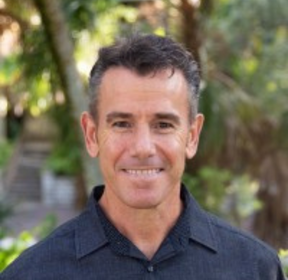
Title: Sleep and circadian science- implications for professional athlete ’ s performance and health
Abstract:
Sleep AND CIRCADIAN SCIENCE- IMPLICATIONs FOR Professional Athletes PERFORMANCE AND HEALTH
Biography:
Ben Potenziano is a Certified Athletic Trainer that works in Professional Baseball in the United States. He holds a Masters Degree in Education with a concentration in Exercise Science. His background also involves Strength and Conditioning at the professional baseball level. He has 21 years of baseball experiences. He has been involved with sleep and mental health which he is extremely passionate about. Ben is also involved with the Professional Baseball Athletic Trainers Society and on the board.
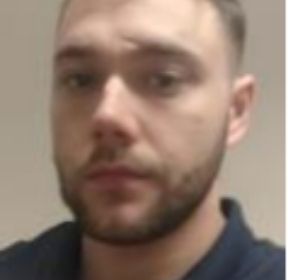
Mr Thomas Donelon
United KingdomTitle: An evidence based technical framework for mitigating knee joint loads in cutting tasks
Abstract:
Cutting actions are associated with non-contact ACL injuries in multidirectional sports due to the propensity to generate large multiplanar knee joint loads (KJLs) that have the capacity to increase ACL loading and strain. Numerous studies have investigated the biomechanical determinants of KJLs in cutting tasks. The aim of this systematic review was to comprehensively review the literature regarding biomechanical determinants of KJLs during cutting, in order to develop a cutting technical framework alongside training recommendations for practitioners regarding KJL mitigation. Databases (SPORTDiscus, Web of Science and PubMed) were systematically searched using a combination of the following terms: “Biomechanical determinants”, or “Knee abduction moment”, or “Technical determinants”, or “Knee loading”, or “Knee loads”, or “Mechanical determinants”, or “ACL strain”, or “Knee adduction moment”, or “Anterior tibial shear”, or “Knee internal rotation moment”, or “Knee valgus moment” AND “Change of direction”, or “Cutting manoeuvre”, or “Run and cut”, or “Run-and-cut”, or “Sidestepping”, or “Side-stepping”, or “Shuttle run”. Inclusion criteria were as follows: studies examining a cutting task < 110° with a preceding approach run that examined biomechanical determinants of KJLs using three-dimensional motion analysis. The search returned 6404 possibly eligible articles, and 6 identified through other sources. Following duplicate removal, 4421 titles and abstracts were screened, leaving 246 full texts to be screened for inclusion. Twenty-three full texts were deemed eligible for inclusion and identified numerous determinants of KJLs; 11 trunk, 11 hip, 7 knee, 3 multiplanar KJLs, 5 foot/ankle and 7 identifying ground reaction forces (GRFs) as determinants of KJLs. Using the framework developed from the results, cutting KJLs can be mitigated through the following: reducing lateral foot-plant distances, thus lowering hip abduction and orientating the foot closer to neutral with a mid-foot or forefoot placement strategy; minimising knee valgus and hip internal rotation angles and motion at initial contact (IC) and weight acceptance (WA); avoiding and limiting lateral trunk flexion and attempt to maintain an upright trunk position or trunk lean into the intended direction; and finally, reducing GRF magnitude during WA, potentially by attenuation through increased knee flexion and emphasising a greater proportion of braking during the penultimate foot contact (PFC).
Biography:
Thomas Donelon is a University Instructor and PhD candidate in Sports Biomechanics and Strength and Conditioning at Canterbury Christ Church University. Tom completed his BSc in Sport Science (Advanced Strength and Conditioning) at The University of Salford in 2016, attaining a first-class degree with honours. During this time he developed a deep interest in biomechanics, predominantly the biomechanics of Strength and Conditioning, and injury incidence and prevention. Previous posts have involved the testing of team GB triple jumpers, 3D motion analysis of elite endurance runners and other athletic populations, alongside a research assistance post in clinical gait analysis. Tom graduated with an MSc in Strength and Conditioning with Distinction from the University of Salford in 2018. Tom acts in a consultancy capacity with numerous sports clubs. Current research interests are aligned to the biomechanics involved in change of direction tasks, their application to performance and injury and if using strength and conditioning protocols can mitigate knee joint loads and improve performance in these tasks.

Cameron Black
United KingdomTitle: Can primary care physiotherapists conduct sickness absence certification and fitness for work recommendations?
Abstract:
Our National work identifies first contact practitioners (FCPs) learning and development needs and challenges faced in response to the ambition of manging fitness for work and sickness absence certification within primary care, a diverse role that arguably and traditionally has been outside the therapeutic relationship. This presentation will focus on work being a health outcome and how work-related conversations should be commonplace for those with a therapeutic relationship with patients. It will also consider how to have work related conversations for Allied Health Professionals and what should be considered when discussing work.
Biography:
Cameron is a MSK Physiotherapist working within a large NHS Trust in the UK. He holds a 4-year BSc (Hons) Degree in Physiothearpy, a MSc in Sport and Exercise Science and Medicine and is now studying for a Doctorate. Cameron has 12 years of clinical practice, having working in Singapore for nearly 4 years and within the public and private healthcare sectors within the UK. He has now specialised within Occupational and Corprate Health and is passionate about health and work.
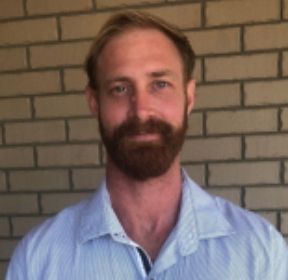
Mr Matthew Gwynne
FranceTitle: What is a sports chaplain? And why are they an important component of sports medicine and athlete care?
Abstract:
Why do we need sports chaplains? Competitive and professional athletes have a significant influence in the world. They are entertainers. They are battlers, warriors, who are often putting their bodies on the line, and at the limit their lives. Their performance often becomes the topic of conversation and judgement not only personally, internally at their clubs, but also in the public sector for all to scrutinise. They make massive sacrifices, not only physically to participate and compete in their sports but socially, spending long hours, and days that turn into months and years of missing family occasions - including celebrations and bereavements, all for the sake of their performance and the advancement of their careers. It is impossible to know the impact or count the cost that the countless hours of preparation and competition have on these athletes physically, mentally, emotionally, socially and for many spiritually. But who is there for these athletes as individuals? As humans, irrespective of their last or next performance?
Biography:
Matthew is a physiotherapist by profession, graduating with a BPhty from Otago university in New Zealand in 2010. He worked full time as a physiotherapist for 3 years, with a particular interest in sports working with several premier men’s rugby teams and various regional and national representative athletes. He then became a volunteer with an international interdenominational Christian organisation youth with a mission (YWAM) in Biarritz, France for 7 years as a mentor and sports facilitator. Completing his sports chaplaincy training with Holistic sports in France, he has been serving high level athletes, predominantly professional rugby players as a sports chaplain for 4 years. With this combination of skills to treat and care for athletes as a whole, Matthew has a profound passion in providing, promoting and training holistic care and support for high level athletes in mind, body, soul and spirit.
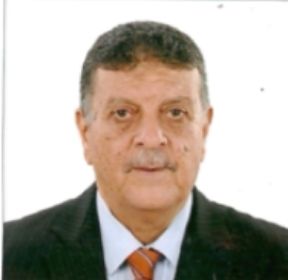
Prof Magdy Abouzeid
EgyptTitle: Left ventricular performance following swim training in egyptian wheelchair swimmers
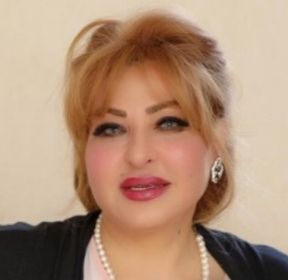
Karoline Abdalaziz
EgyptTitle: Molecular aspects of hydrogen sulfide (H2S) in cardiovascular pathology
Abstract:
Cardiovascular diseases are the most leading reasons for mortality worldwide. In the past few years, hydrogen sulfide (H2S) and its donors have been strongly emerged and suggested as promising therapeutic agents in cardiovascular disease, due to their ability to reverse a wide spectrum of pathophysiological processes. Since, H2S and its donors have established their role as vasodilatory, neuromodulatory, anti-inflammatory and antioxidant agents. However, the interference of H2S with the other biological molecules during the pathophysiological conditions, particularly in cardiac failure represents an enigma and still unclear. For instance, it is beyond debate that the interaction of H2S and NO is controversial. We discuss the cardiovascular protective properties of H2S, the interference and cross-talk between H2S and NO, along with its interference with the other mediators under normal and pathological conditions. In this review, we demonstrate the rational and underlying mechanisms for its cardiovascular protective role against the development of cardiovascular diseases, including systemic and pulmonary hypertension; hypoxia in carotid bodies; periadventitial vasorelaxation; cardiac injury induced by ischemia, oxidative stress, and CaMKII. Furthermore, the molecular and possible mechanisms for the progression of atherosclerosis, and the anti- atherosclerotic role of H2S were discussed.
Core tips: Despite that hydrogen sulfide (H2S) and its donors being considered promising therapeutic agents in cardiovascular protection, a wide spectrum of reviews and meta-analyses have been focused on their potent anti-hypertensive effect. However, little is known about their cardiovascular protective effect, whether at normal and or the pathological conditions. Our objective is to provide a bi-lateral vision on their performance at normal and pathological sets to understand the possible molecular targets, which H2S and its donors are affecting them that in turn, can help us to define the key factors for the effective treatment for cardiac and vascular diseases.
Biography:
Professor Karoline is a former Dean of the faculty of Science (2014-2017) at Damanhour University. Currently, she worked as the Head of Zoology Department. Since 2012 she worked as a professor of Physiology in her institute. She has a wide experience in the applied and translational research in physiology and immunology. 1n 1995 she had earned the PhD at Zoology Department, Faculty of Science, Alexandria University, Alexandria, Egypt, and Harvard University, U.S.A. (Channel System Program). In 2016 she had selected as one of expertise in the field by the Scientific and practical expertise in the science necessary measurements for science and engineering projects Albeira Governorate in
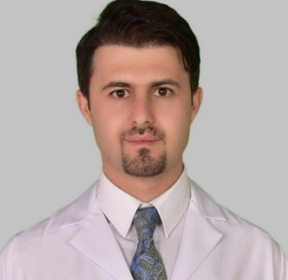
Hunar Ali
IraqTitle: Arthroscopic anterior cruciate ligament reconstruction: Comparison of functional outcome between femoral fixations by suspensory fixation versus aperture fixation
Abstract:
Background and objectives: Anterior cruciate ligament reconstruction is one of the most common knee operations. The graft fixation ways differ from suspensory fixation methods (Endobutton) to aperture fixation (Interference screws). The use of a hamstring tendon autograft has become a common choice among orthopedic surgeons because of less donor site problem
Aim: The aim of this study is to compare the functional outcome between suspensory fixation and aperture fixation of arthroscopic anterior cruciate ligament reconstruction.
Patient and Methods: Arthroscopic autogenous hamstring anterior cruciate ligament reconstruction was performed for forty-one patients who were divided into two groups, with a minimum of six months follow up evaluation. The suspensory fixation group underwent endobutton fixation on the femoral side and interference screw on tibial side. The aperture fixation group underwent interference screw fixation at both femoral and tibial tunnels. Both groups were assessed and their functional outcomes were compared before surgery, at three months and six months by using Lysholm knee score.
Results: There was significant improvement in functional outcome in both groups, at six months of follow up, the Lysholm score in endobutton group improved from 77.2 to 93.2 and in interference screw group from 71.5 to 89. The endobutton group had better functional outcome when compared to interference screw group.
Conclusion: The endobutton fixation provided better functional outcome at the end of six months when comparing the result. We recommend larger population and longer periods of follow up.

Hafizul Azad Malmintakam
United Arab EmiratesTitle: PHYSIOTHERAPY MANAGEMENT OF TENNIS ELBOW
Abstract:
Introduction: Lateral epicondylitis or tennis elbow is a tendinopathy with a prevalence of between 1-3% of the population aged 35 – 50 years. It is considered an overload injury of the extensor tendons of the forearm where they attach at the lateral epicondyle. Although, usually self-limiting, symptoms may persist for over 1 year in up to 20% of people. Usually pain over the anterior extensor tendon pathways not in the extensor muscle origin.
Physiotherapy treatment methods: Considering both acute and chronic management. In acute management (2 – 3 months) usually includes transcutaneous electrical nerve stimulation (TENS), ultra sound (US), joint mobilization, extensor tendon trigger point release. If it is not getting improved then, it will be subacute stage (4 – 5 months). In this stage treatment will be shock wave (once per week), Mulligan manipulation and tapping, fascial taping, extensor strengthening exercises, LASER and extensor muscle dry needling. If the pain persists more than 6 months considered as chronic. The treatment will be acupuncture needling with electricity shows a very good result along with shock wave (once per week), postural fault correction, manipulation with drop table and last excercises
Biography:
Speakers
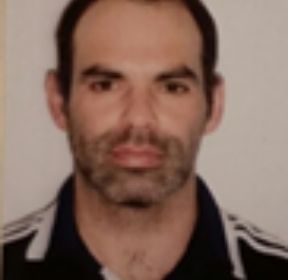
Henrico Erasmus
University of Zululand, South AfricaTitle: Rugby Injury Incidence In Semi-Rural University Team
Abstract:
Rugby Union is a very important international sport, while in South Africa it played an important part in unifying racial groups in the country during challenging political times, making it the second most popular sport in South Africa. It is contact sport and due to the nature of the sport, players experience high injury incidences. Rugby players in rural areas might experience unique challenges and risk of injury. Rugby injury incidence in rural areas has not been well researched and it is unclear if rural based teams in South Africa are at increased risk of injury. Aim: The aim of this study was to determine the overall injury incidence of the male senior rugby team at the University of Zululand during the competitive part of the 2019 season and to compare the injury incidence between matches and training. Methods: This study used a purposive, quantitative design which included 30 rugby players from the University of Zululand`s first team and collected training and match injury data during the competitive phase of the season. Injuries were expressed relative to exposure as number of injuries per 1000 hours of exposure
Biography:
Dr Erasmus is a registered Biokineticist with the Health Professional Council of South Africa, a board member of the Coaching and Education Commission of Judo South Africa, internationally accredited coach with the International Judo Federation and certified cycling, athletics and rugby coach in South Africa. He currently works as university lecturer at the University of Zululand. He holds a PhD from North-West University, South Africa, in the field of injury prevention. He has practiced as part of various sports medicine teams over the course of 14 years before starting a career as lecturer. His research interests are injury prevention during long term tathlete development (LTAD) and utilising pedagogical principles of physical education and coaching to improve practitioner-patient communication and injury rehabilitation.

Cristina Mennitti
ItalyTitle: Identification of serum biomarkers to create an athlete’s biological passport
Abstract:
Intense physical exercise induces metabolic and organ adaptations that result in variations in terms of concentration and activity of some biochemical and haematological parameters. The identification and monitoring of these parameters could represent a new method of clinical evaluation in athletes in order to prevent injuries, loss of shape and, above all, the appearance of some pathologies. For this study, we have recruited 12 male athletes from a professional basketball team who, with prior informed consent, underwent blood sampling in different phases of the sports season: 0 months, in the initial phases of the championship; 1 month and 3 months after the start of the championship. Erythrocytes, hematocrit, hemoglobin, and platelets have no significant variations, but there is an increase in the mean corpuscular volume (MCV) and in the mean platelet volume (MPV) between 1 and 3 months in comparison to 0 months. CK levels have no significant variation between 0 and 3 months; whereas LDH levels undergo a slight decrease if we compare months 0 with months 3. Vitamin D levels decrease at 1 month and 3 months if compared with 0 months. Finally, cortisol and thyroid hormones levels have no significant variation, but there is a moderate increase in the FT4 hormone at 1 month when compared to month 0. Moreover, we evaluated serum CRP levels that revealed a significant increase in 3 months if compared with month 0.In conclusion, this study has revealed changes in some biochemical and haematological parameters during the sporting season, in accordance with the frequency and intensity of physical activity. These parameters could be included in an “athlete's biological passport”, a panel of specific markers that, applied to the individual athlete, would help sports doctors and athletic trainers to develop personalized training and recoveryprograms, aiming at safeguarding the athlete’s health and maximizing athletic performance.
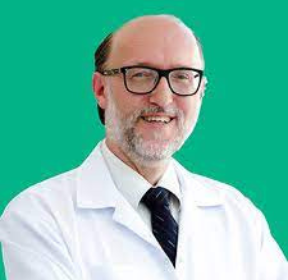
Suad Trebinjac
United Arab EmiratesTitle: Regenerative therapy for ligaments, tendons and meniscus injuries. Current evidence
Abstract:
Ligaments, tendons and meniscus are among the most common sports injuries with poor healing potential. Persistent symptoms and limited function have serious impact on sports carrier.Current treatment is mainly limited to symptom relieve which results in chronicity and incomplete healing. Regenerative medicine is evolving medical science offering possibility to shift our scope from “care” to “cure”. In its theoretical concept it brings the hope that impaired tissue can be regenerated and functional as before the injury. The most common form of regenerative therapy in sports medicine is direct injections to the damaged tissue. The ingredients with possible regenerative potential that are recently used are dextrose (the treatment is called prolotherapy), platelet rich plasma (PRP) and mesenchymal stem cells (MSc).By searching the literature and current evidence we will try to answer three important questions related to regeneration of ligaments, tendons and meniscus :
- Do regenerative injections provide long term symptoms relieve?
- Are there verified structural changes in injected tissues after the treatment?
- Does regenerative therapy reduce the time to return to play?
The future of regenerative medicine based on current research will be elaborated in detail.
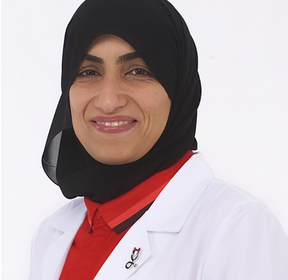
Reema Alhosani
United Arab EmiratesTitle: Doping in sport: global fight
Abstract:
Doping destroyed ethics and integrity of sports and exceed that to include effect on athlete’s health and reputation. Fighting doping is a global responsibly and sports community need to continue educating athletes and search for innovative education methods and tools. Usage of banned substances had been identified in all sports and prominently more in some. Amphetamine and steroids are among the commonest banned substances seen in different sports in Gulf area. Contaminated supplements is another rising challenges. Four violation cases were encountered in UAE football in 2022 due to contaminated supplements. Identifying the usage trend among athlete will help to direct our educational and prevention programs and focus on mitigation plans to protect athletes. The role of support personnel including the physiotherapist is very crucial. Building a standardized programs, standards and protocol by support personnel is required. Focus on customized education programs is another bonus tool in prevention.
Biography:
Dr Reema Alhosani, Specialist sports physician, MBBS (Faculty of medicine & health science in UAE), MSc (sports medicine, Nottingham University), PhD (sports medicine, Nottingham University), Head of medical Section in GHQ of Abu-Dhabi police, Deputy Chairperson medical committee in UAEFA. Head of Medical Executive Committee (GHQ Abu-Dhabi police). Member of medical committee NOC. AFC medical and doping Officer. Head of research committee (Abu-Dhabi medical service department).

Ibtihal Allami
IraqTitle: Training course and adjustments brainwave and their relationship to Autonomic Nervous System
Abstract:
The Brain is the central processing centre for physical and mental activities. It is the most affected by physical performance and achievement, however, it did not receive the attention of specialists in the fields of sports physiology adequately and Particularly with regard to the study of brain waves and the most important impact of training and their relationship to the nervous system autonomy is closely linked to the work of many of the other bodily organs (heart, blood vessels and the respiratory system and the endocrine, etc.) and that contribute significantly to the sporting achievement
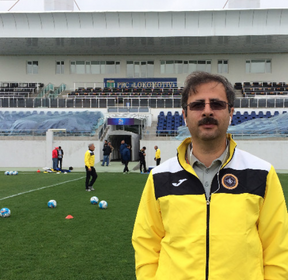
Abbas Yousefzadeh
IranTitle: The Effect of Therapeutic Exercise on Long-Standing Adductor-Related Groin Pain in Athletes: Modified Hölmich Protocol
Abstract:
The Holmich protocol in therapeutic exercise is the most appropriate method for the treatment of long-standing adductor-related groin pain(LSAGP). Herein, we evaluated a modified Holmich protocol to resolve the possible limitations intrinsic to the Holmich protocol in terms of the rate of return to sport and the recovery period for athletes with LSAGP. Design. The study followed a single-blind, before/after study design, where 15 athletes with LSAGP (meanage=26.13 years; SD=4.48) performed a 10 - week modified Holmich therapeutic exercise protocol. Results. Outcome scores related to pain, hip adductor and abductor muscle strengths, and the ratio of maximum isometric and eccentric hip adduction to abduction strength increased significantly. Likewise, hip abduction and internal rotation ROM improved significantly compared to that at baseline. Furthermore, functional records (𝑡- test, Edgren Side Step Test, and Triple Hop Test) showed significant improvement after treatment. Finally, 13 athletes (86.6% of the participants) successfully returned to sports activity in a mean time of 12.06 weeks (SD = 3.41). Conclusion. The findings of this study objectively show that the modified Holmich protocol may be safer and more effective than the Holmich protocol in athletes with LSAGP in promoting their return to sports activity. This trial is registered with IRCT2016080829269N1


